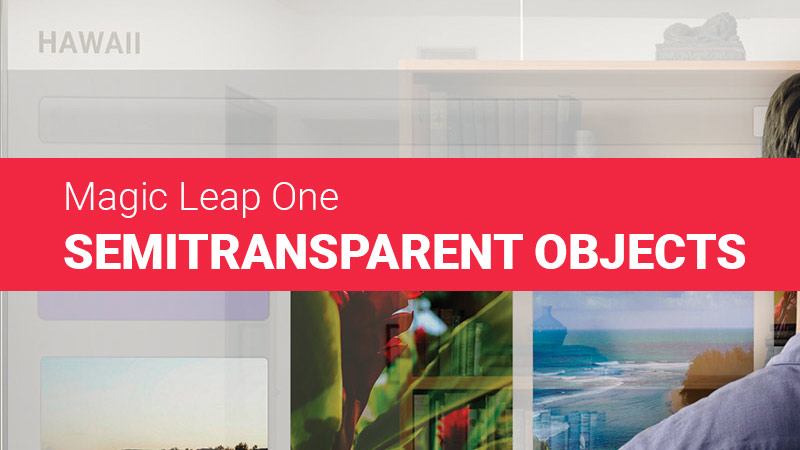When watching many of the videos that Magic Leap users shared online, including images, I’ve noticed that the virtual content appears partially transparent to some degree but it never appeared fully opaque. If it was, it might be due against a darker background. Now, I am not talking about user interfaces or any virtual element that was designed to have some degree of transparency, but objects that had no alpha channel applied to them.
I obviously want to have an option to have an option to see virtual objects without any transparency for two main reasons. The first one to have a higher degree of realism, and the second one, so distracting background elements won’t impair the visual experience.
Take a look at this part of the video showing a user interface. Take a look at the icons. Now You can see that they are semitransparent not totally opaque. Now, take a look at the icons in the darker areas like the one on the left (cloud) and the right (the one with the red butterfly). Those appear opaque, but because they appear on dark areas or areas that have a solid color or with no harsh contrast transitions.
Some apps can benefit from having a high degree of realism as virtual entities will appear more real, and less like a mixed content layer. Although the content is mixed with the real world, it’s still layered on top of it, because the optics are the one you see the virtual content through and those are placed between your eyes and the real world.
In Mixed Reality, there are many times where you want to create a seamless experience, one that the user will have a hard time to distinguish between what’s real and what’s not. This is one of the exciting things about this technology.
When I use an app in augmented reality, the virtual content appears solid/opaque unless the developer decided to add an alpha channel to make some or all of the content have transparency.
That seethrough look is something that troubled users who experienced the same thing with the HoloLens. When you have a partially transparent virtual content, if it’s a 3D object, it kind of impairs the depth perception of that object, making it appear like it appears lacking volume.
I don’t know how the Lightfield technology works in-depth to try to analyze where this is coming from, but the translucent lenses are probably one of the reasons why we can’t get a full solid color, it isn’t backlit like standard LCD displays.
Furthermore, the Magic Leap One projects a digital light field into the user’s eye. So essentially, from my understanding, you can’t project a non-transparent object over the light photos that are beamed directly into the eye.
I’ve read the Windows Mixed Reality documentation on microsoft.com. There it says that Holographic devices have additive displays and that Holograms are created by adding light to the light from the real world. White will appear brightly while black will appear transparent. This even leads to some design considerations, especially regarding color when creating your mixed reality apps.
I’ve read on venturebeat.com that the Magic Leap One uses, and I quote: “multi-depth light-additive displays”. So this is a technology not too much different than what the HoloLens uses. This is as far as I went investigating that topic on the available time that I had.
Here is a video where you can observe this phenomenon that I am talking about (video by Avaer Kazmer).
I hope someone can shed some light on this topic. I definitely don’t have the requires knowledge to even know how to approach this even if I spend hours investigating the topic. I hope someone can share help solve that mystery.

